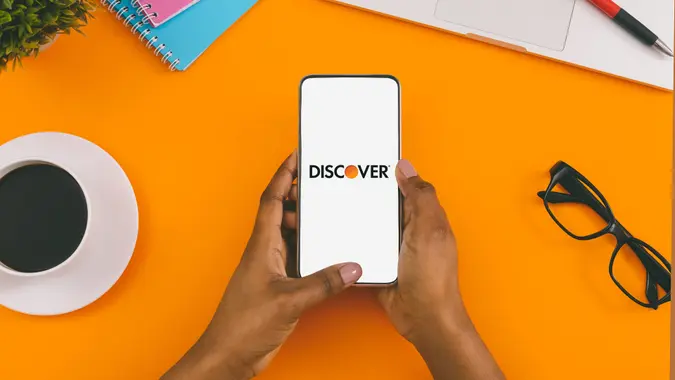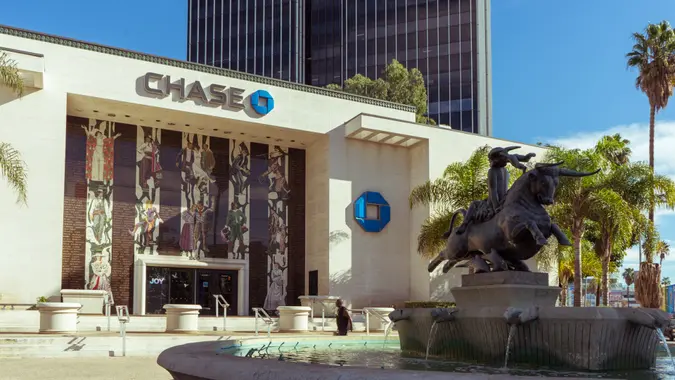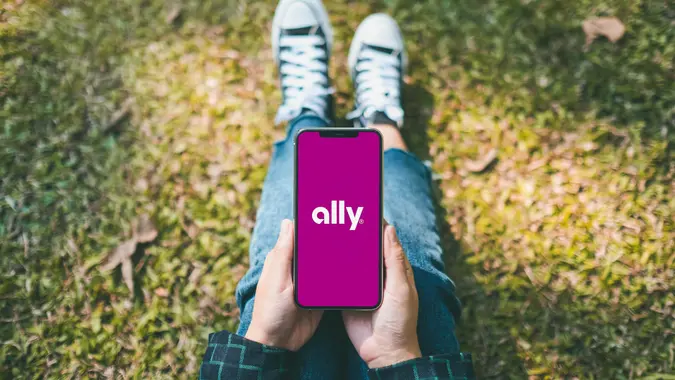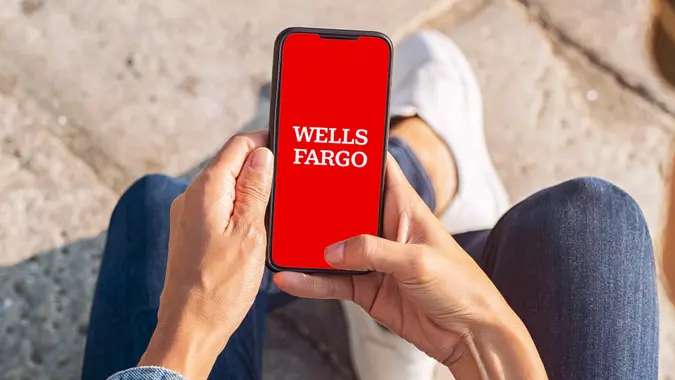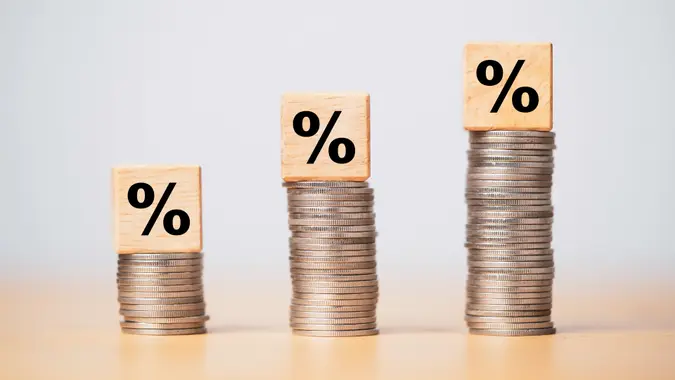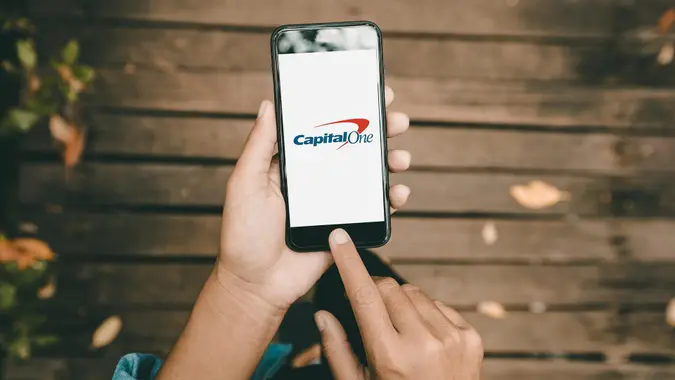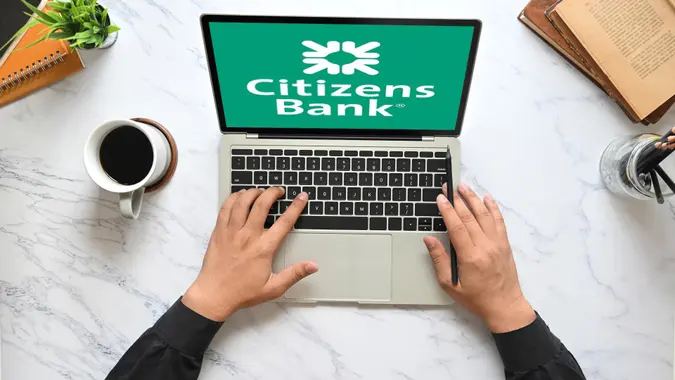High-Yield Saving Accounts: How They Work and Why You Need One

Commitment to Our Readers
GOBankingRates' editorial team is committed to bringing you unbiased reviews and information. We use data-driven methodologies to evaluate financial products and services - our reviews and ratings are not influenced by advertisers. You can read more about our editorial guidelines and our products and services review methodology.

20 Years
Helping You Live Richer

Reviewed
by Experts

Trusted by
Millions of Readers
High-yield savings accounts are a great place to stash cash and have all but replaced traditional savings accounts for savvy investors. That’s because high-yield savings accounts carry the same FDIC insurance as traditional ones but pay interest rates as much as 10 times higher.
Here’s a look at high-yield savings accounts, including how they work, how they can pay such a high interest rate and whether or not they might be right for you.
What Is a High-Yield Savings Account?
A high-yield savings account is one way to earn a high yield on your savings. The annual percentage yield offered tends to be much higher than the national average and traditional savings accounts.
Most online savings accounts are issued by online banks, or the mobile and electronic divisions of traditional banks, and they often have no account minimums or monthly fees. Due to the lower overhead that online banks have, they can afford to pay higher interest rates on their deposits.
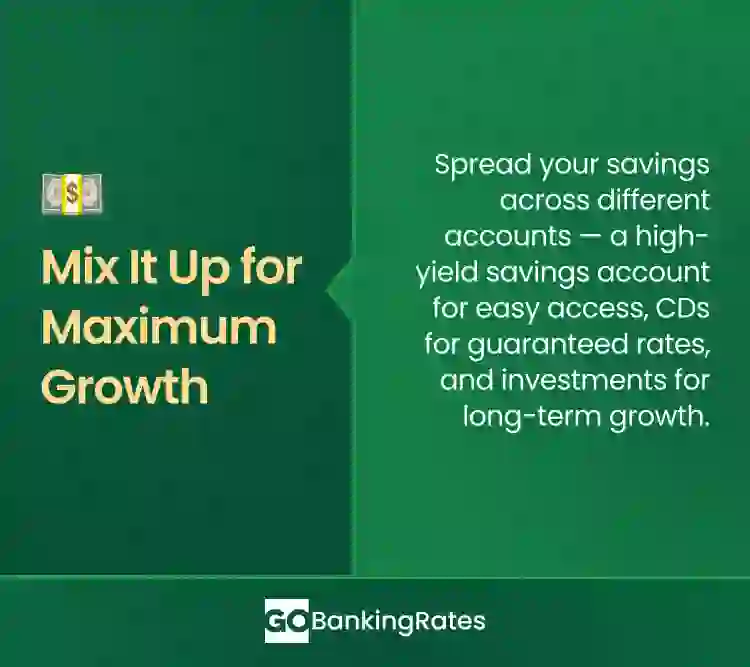
Key Features of High-Yield Savings Accounts
High-yield savings accounts work in a way similar to standard savings accounts. You deposit your savings, and then the bank pays you interest according to the account terms. There are some differences, though.
Variable Annual Percentage Yield
The initial interest rate may increase or decrease after you open a high-yield savings account. This is why high-yield savings accounts shine during periods of higher interest rates, such as during the past few years.
Did You Know?
The U.S. Federal Reserve started aggressively raising interest rates in March 2022, and rates remained high until late 2024, when there was a cut. Still, high-yield savings account yields are strong and offer competitive returns.
According to the Federal Reserve, the national rate paid on all savings accounts is only 0.41%. By way of comparison, many high-yield savings accounts currently pay 10 times that rate or more. Here are five high-yield savings accounts with rates between 3.50% and 4.50% APY. None of these offerings has minimum account balance requirements or monthly fees.
| Account | APY |
|---|---|
| Ally Bank Online Savings Account | |
| Bask Bank Interest Savings Account | |
| Capital One 360 Performance Savings Account | |
| SoFi Checking and Savings* | up to |
| Synchrony Bank High Yield Savings |
FDIC and NCUA Insurance
High-yield savings accounts also offer more security in the form of insurance. The Federal Deposit Insurance Corporation insures your deposits up to $250,000 per depositor for individual high-yield savings accounts. That means if the bank holding your high-yield savings account were to fail, you’re covered — up to the insured limits — ensuring your money stays safe.
If your emergency fund is currently in a traditional savings account, consider moving it to a high-yield account where it can earn more for you. You can access your funds in a high-yield account just as quickly as you can with a traditional one if a financial emergency arises, and you’ll still have the same FDIC insurance.
Access and Convenience
With high-yield savings accounts, you typically have the same access to online and mobile tools that your bank already offers. That means through a bank’s mobile app or website, you can transfer funds, check your balance, set up automatic deposits, and track your interest earnings. You can also check your transaction history and set up alerts so that you’re notified if there is any unusual activity.
Benefits of High-Yield Savings Accounts
Nearly every investor would benefit from having a high-yield savings account. This is because everyone should be saving money, ideally for a few different goals.
Take a look at the benefits:
Faster Growth
High-yield savings accounts typically offer much higher interest rates than traditional savings accounts. This means your money can grow faster, earning you more over time without any extra effort on your part.
Flexibility
Many high-yield savings accounts are available online, so you can quickly access your money through mobile apps or websites. That means you can transfer, withdraw and deposit money to your account with the click of a button. There also aren’t typically any monthly maintenance fees when it comes to high-yield savings accounts. You may also be able to set up automatic transfers from your checking account, so you don’t have to remember to make a deposit each month to hit your goals.
Low Risk
Most high-yield savings accounts are insured by the FDIC, so your deposits are insured up to $250,000. Even if your bank were to fail, you’d be covered up to your limit of $250,000.
A high-yield savings account is not typically recommended for retirement savings or other long-term savings goals.
While a high-yield savings account is not a good option for long-term savings goals, like retirement, it is an ideal savings vehicle for stashing money you’ll need to access for your short-term goals in the next few years.
Potential Drawbacks to Consider
Considering the higher APYs and easy-to-meet requirements of many high-yield offerings, opening a high-yield savings account may seem like a no-brainer. Is opening a high-yield savings account always a good idea, though?
Here are a few downsides of a high-yield savings account:
Rates Can Fall
High-yield savings accounts are booming right now because they are paying their highest rates in years. But once rates start to fall, as many anticipate, savings APYs will drop as well. Although several accounts are currently paying over 5%, those same accounts were paying less than 1% just a few years ago. This is why you can’t rely on any type of savings account, even a high-yield one, to achieve long-term investment goals.
Potential Hidden Fees
Although most high-yield savings accounts don’t charge monthly maintenance fees, there may be other fees that can eat up all your interest if you aren’t careful. Charges for ATM withdrawals, wire transfers or overdrafts are things you should be aware of before you choose a high-yield savings account.
How To Choose the Right High-Yield Savings Account
To choose the right high-yield savings account, you’ll want to find the one that provides the features and benefits you need while charging you the lowest fees. This way, your money can earn the most that it can while still being safe and accessible.
Before opening any new bank account, compare the requirements, fees and APYs of accounts at several financial institutions. Make sure you choose an account that best meets your savings needs.
Online banks are often your best choice for high-yield accounts, mainly because they can offer higher yields due to their lower operating costs. They typically charge no fees as well. Every bank is different, though, so be sure to review what each one offers and what it doesn’t. You should also verify that your bank is covered by FDIC insurance. Most are, but there’s always a chance your online bank might not be, so it pays to double-check.
Final Take
Whether you’re building your emergency fund or have some other short-term savings goal, like a down payment for a house, a high-yield savings account can be a great way to protect your money while earning you a decent interest rate.
While some high-yield savings accounts might have fees for excessive withdrawals and may not provide an ATM card for easy access to your funds, the same is true for many traditional savings accounts. Since many traditional savings accounts come without fees and strict account requirements, it makes good financial sense to upgrade to a low or no-cost option that will pay you more interest on your money.
Carefully comparing financial institutions and thoroughly reviewing their account requirements and terms can help you ensure that you’re choosing a high-yield savings account with low fees.
High-Yield Savings Account FAQs
If you are looking for answers to some frequently asked questions about high-yield savings accounts, look no further.- How much interest can I earn with a high-yield savings account?
- The amount of interest you can earn with a high-yield savings account depends on the account’s annual percentage yield, which typically ranges between 3% and 5% in 2025. Some accounts may offer higher rates based on factors like maintaining a higher balance or meeting certain conditions. The interest you earn will also be influenced by how often the interest is compounded—whether it's daily, monthly, or quarterly.
- Can I lose money with a high-yield savings account?
- In most cases, you cannot lose money in a high-yield savings account, as long as the account is FDIC-insured or insured by a similar government-backed entity, such as the NCUA. FDIC insurance protects your deposits up to $250,000 per depositor.
- Can I open a high-yield savings account with a small amount of money?
- Yes, you can open a high-yield savings account if you only have a small amount of money to start with. You can find accounts that only require $1 to open. Even better, several banks offer high-yield savings accounts with no minimum deposit required, such as Ally, Discover and Synchrony Bank.
- Do I have to pay fees for a high-yield savings account?
- For the most part, high-yield savings accounts do not charge any monthly fees to maintain the account. However, you may be required to keep a certain minimum balance or have a specific number of direct deposits to the account. It's good to check these requirements while you're shopping around for the best bank to suit your needs.
Andrea Norris contributed to the reporting for this article.
*Earn up to 4.50% Annual Percentage Yield (APY) on SoFi Savings with a 0.70% APY Boost (added to the 3.80% APY as of 8/5/25) for up to 6 months. Open a new SoFi Checking & Savings account with Eligible Direct Deposit by 1/31/26. Rates variable, subject to change. Terms apply at sofi.com/banking#2. SoFi Bank, N.A. Member FDIC.
*Capital One interest rates are accurate as of 8/26/2025. See website for all current rates.
Rates are subject to change; unless otherwise noted, rates are updated periodically. All other information on accounts is accurate as of August 15, 2025.
Editorial Note: This content is not provided by any entity covered in this article. Any opinions, analyses, reviews, ratings or recommendations expressed in this article are those of the author alone and have not been reviewed, approved or otherwise endorsed by any entity named in this article.
SoFi members who enroll in SoFi Plus with Eligible Direct Deposit or by paying the SoFi Plus Subscription Fee every 30 days or SoFi members with $5,000 or more in Qualifying Deposits during the 30-Day Evaluation Period can earn 3.80% annual percentage yield (APY) on savings balances (including Vaults) and 0.50% APY on checking balances. There is no minimum Eligible Direct Deposit amount required to qualify for the stated interest rate. Members without either SoFi Plus or Qualifying Deposits, during the 30-Day Evaluation Period will earn 1.00% APY on savings balances (including Vaults) and 0.50% APY on checking balances. Interest rates are variable and subject to change at any time. These rates are current as of 08/15/25. There is no minimum balance requirement. If you have satisfied Eligible Direct Deposit requirements for our highest APY but do not see 3.80% APY on your APY Details page the day after your Eligible Direct Deposit arrives, please contact us at 855-456-7634. Additional information can be found at http://www.sofi.com/legal/banking-rate-sheet. See the SoFi Plus Terms and Conditions at https://www.sofi.com/terms-of-use/#plus.
SoFi Bank is a member FDIC and does not provide more than $250,000 of FDIC insurance per depositor per legal category of account ownership, as described in the FDIC’s regulations. Any additional FDIC insurance is provided by the SoFi Insured Deposit Program. Deposits may be insured up to $3M through participation in the program. See full terms at SoFi.com/banking/fdic/sidpterms. See list of participating banks at SoFi.com/banking/fdic/participatingbanks.
 Written by
Written by  Edited by
Edited by 



